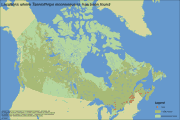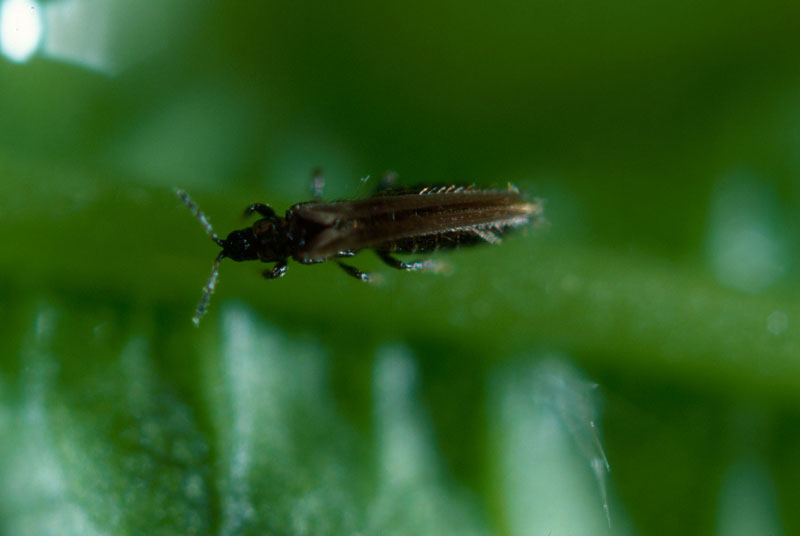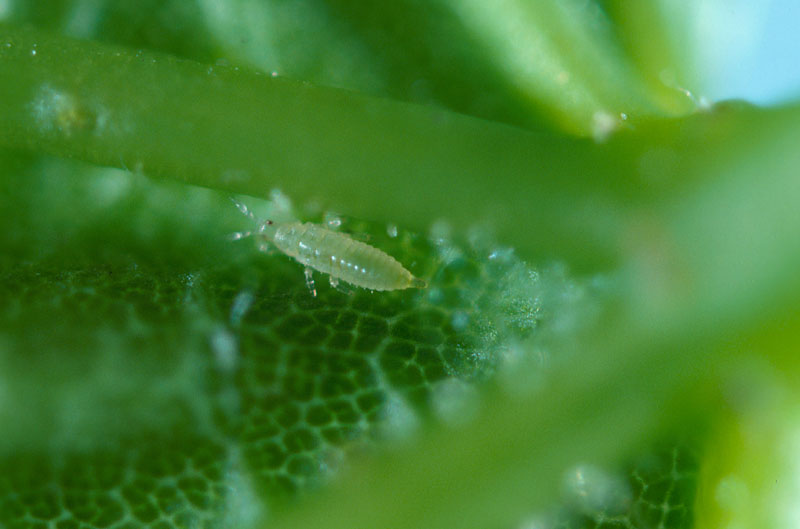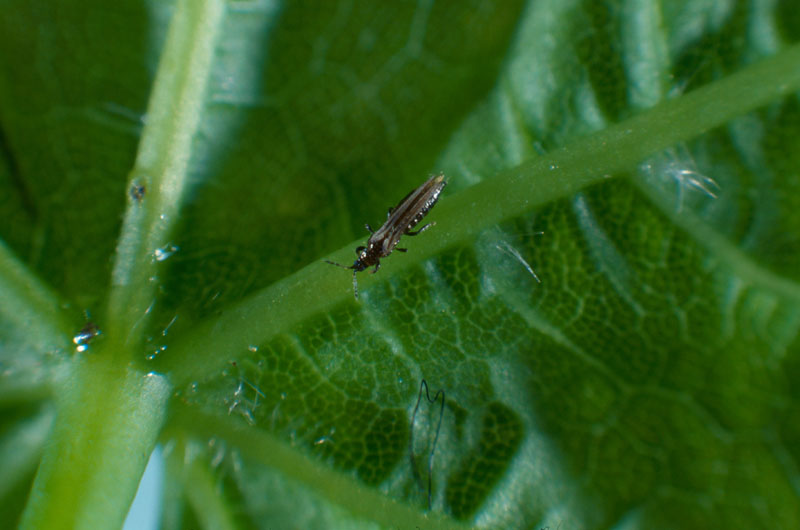Pear thrips

- Order: Thysanoptera
- Family: Phlaeothripidae
- Latin: Taeniothrips inconsequens (Uzel)
- English: Pear thrips
- French: Thrips du poirier
Description
Distribution
N/A
Diet and feeding behavior
Phytophagous / Sap-feeding / Piercing-sucking
Micro-habitat(s)
Bud, Leaf
Damage, symptoms and biology
Pear thrips are tiny insects (1 mm to 1.5 mm long) that suck the delicate tissues of freshly opened sugar maple buds. The sugar maple is the species reported to have the worst attacks and the most damage, although pear thrips attack other species such as red maple and Norway maple. In the case of large populations of the insect, which often occur, its attacks inhibit the development of foliage and weaken trees. Moreover, pear thrips larvae feed on developing foliage throughout the spring. The insects usually return every year, but the density of populations frequently varies and thus the damage they cause also varies. Seed production can be affected by the activities of these insects and prolonged infestations can cause withering of crowns and lower sap production. Certain signs indicate slight or moderate infestations: for example, pale yellow or white spots on leaves or dark-coloured, abnormally small, stunted leaves. Severe infestations give the impression that tree foliage was damaged by a late frost, making the leaves much smaller than usual. The colour of the larvae varies from yellowish to translucent light green and their red eyes are easily visible.
Comments
This small but formidable pest originated in Europe. However, the date and circumstances of its arrival in North America are unknown. They are known to have been in California orchards in the early 1900s. When they were discovered in Pennsylvania in the late 1970s, it was thought to be the first major invasion by these exotic insects. Within a short time in 1988, they ravaged 1.3 million acres of forest in Pennsylvania alone. Then they quickly spread to other states, particularly Vermont, where they have defoliated over a half million acres of forest. These infestations are an example of the phenological synchronization that sometimes links plants and insects. In fact, outbreaks of pear thrips are directly related to warm, dry spring weather that results in early budbreaks.
Information on host(s)
Main Host(s)
Norway maple, red maple, sugar maple



